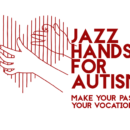This is an excerpt from Ari Herstand’s new book How To Make It in the New Music Business: Third Edition.
DID YOU KNOW that Pink Floyd’s 1973 masterpiece The Dark Side of the Moon’s run time is only 43:00? Know why? It’s because a vinyl record can only hold about 22 minutes of music per side before the quality gets drastically reduced. Had records been able to hold 35 minutes of music per side, The Dark Side of the Moon could have been a completely different album.
It’s funny that artists are still putting about 10 songs together and releasing them as an album. There are a few reasons for this:
- Most of today’s artists grew up admiring full-length albums. Albums (not singles) are why most of us fell in love with music and chose to make it our profession. So, artists want to create full-length albums—just like their influences.
- Vinyl is back, baby! Like, in a big way. 2021 marked the first year that vinyl sales surpassed CD sales since 1986. Many artists are creating vinyl in lieu of CDs.
- Labels still want to release full-length albums because they can maximize their marketing efforts around one campaign (versus a bunch of smaller, single campaigns).

But there are no time constraints with the digital model. You could have a 1,000-minute album if you wanted. Hell, many people open an artist’s profile on their favorite streaming service and just hit Shuffle anyway, in effect giving them an infinite playlist of their favorite artist. An infinite album.
Artists create for the medium of the times. Drake’s 2021 album Certified Lover Boy has 21 songs and clocks in at 1 hour, 26 minutes. That does not fit on a vinyl record or a CD, but works perfectly on streaming services (with songs sprinkled throughout thousands of playlists). On Spotify, the duration of the top five streamed albums rose almost 10 minutes from 2012 to 2018, to an average of 60 minutes.
But creating longer albums isn’t just for art’s sake. Superstars make extra-long albums to attempt to game the system. Both Billboard and the RIAA calculate an “album” at 1,500 on-demand streams. So, if you have diehard fans, and you release a ton of songs on one album, they’ll spend more time listening all the way down. Chris Brown’s 2017 album Heartbreak on a Full Moon had 45 songs (clocking in at 2 hours and 38 minutes!) and was certified Gold in 10 days (without any hits).
But that doesn’t mean more is always better. Olivia Rodrigo’s breakout album Sour clocks in at only 34 minutes and was nominated for Album of the Year at the 2022 Grammys.
SHOULD YOU RELEASE A SINGLE, AN EP OR AN ALBUM?
Unless you have a Dark Side of the Moon statement to make, you don’t need to create an album. Spend your resources on creating a great song and great videos and get it out. Fans expect music so much more regularly now than they did 10 years ago. If you don’t continue the engagement and continue to feed them musically, they will move on.
Yes, artists still tour on albums. For one, it gives reviewers something fresh to talk about and the old guard still understands “album campaigns.” But there’s no need to create a full-length album unless you truly have a statement to make. So don’t stress yourself out about building the funds for a full-length album.
How often should you be releasing music? That depends on a lot of factors.
Spotify has publicly come out and said they reward consistency. So, if you want to play the Spotify game and have the best shot at editorial playlist inclusion, you’re going to want to follow their suggestions.
Most artists these days are releasing songs every four to six weeks. It may sound daunting, but you can go in waves. If you want to track 12 songs at a time every year, great; then you can release one a month for a year. Or four singles in advance of an album, if you want to release an album.
THE ALBUM RELEASE TIMELINE
If you’re planning to release a full-length album or EP, you can loosely follow this release timeline as a guide.
6-9 Months Before
Order the Vinyl
You need to start planning out your release plan at least six months in advance. 6 months before the release, your album should be mastered. If you’re ordering vinyl, start no later than eight months out contacting the plant to make sure they will be able to turn your order around by your release date. Turnaround times are frustratingly long. And because of the nature of vinyl, a lot can go wrong, so leave time for all of this. It’s not uncommon for plants to have a nine-month turnaround time from submission to delivery. So be prepared.
Qrates is a great option, however, if you want to run a vinyl-only crowdfunding campaign. You can set the minimum number of records needed for the campaign at 100, and if you sell 100 records, everyone gets a record; if you don’t reach the milestone, no one gets a record (but you also aren’t out any money).
Artwork
All vinyl plants will send you art templates to design the artwork from. Make sure your graphic designer creates the art to their specs.
5 Months Before
Liner Notes & Credits
Obviously, if you’re creating vinyl, you need all of the packaging completed before sending it in. More and more DSPs (streaming services) are starting to show credit info and some distributors are now requiring it. Give your drummer some love!
Promo Photos
You’ll also want to get new promo photos done to potentially include on the album cover and within the booklet. If you’re not including any promo photos within your vinyl packaging, then don’t worry about this until three months out. But, it’s nice to include at least one shot of the artist within the packaging.
Record Release Show Holds
If you do it right, this show will sell out. This will be a hometown celebration of all your hard work. You’ll want to do this on a Friday or Saturday, and venues book these prime slots out well in advance. Make sure you get a least a few holds five months out.
Pick the Lead Singles
Do the market research to figure out which are your strongest songs. The answers may surprise you.
Pick Your Distribution Company
Reference my up-to-date Digital Distribution Comparison list on Ari’s Take to figure out which digital distributor is best for you. Many companies can get your music to stores within hours or days, but some require weeks. Best to get on this quickly.
Cue Up the First Single
Yes, you should be releasing a minimum of 3 singles in advance of a full-length album. But most artists these days are releasing 5+ singles before the album, utilizing the “waterfall” technique, where you continue to add songs to the forthcoming album with each release (more on how to do this in a moment). Every single release gives you an opportunity to pitch playlist editors, run new marketing campaigns, and engage your fanbase with new creative.

Singles should be released every four to six weeks. Spotify editors like to receive playlist submissions four weeks in advance, and it takes a few days (sometimes longer) from when you hit Submit in your distribution portal to appear in your Spotify for Artists, giving you the ability to submit the song. And, as of now, you can’t submit song #2 until song #1 is released. Which is why you need to spread out your releases. If you’re going to also release your music on Bandcamp (you should), you can actually cue up all of the releases and album now and submit it to the blog editors.
Create the FanLink
The FanLink is the album landing page with all of the DSPs. Services like ArtistHub, Feature.fm, Show.co, Linkfire and ToneDen have cornered this market. Ask your distributor which links they can provide to you in advance of the release. Most distributors will be able to give you at least Spotify and Apple Music. But others can give you more. And you can always grab your Spotify link in your Spotify for Artists. Include Bandcamp. Point everyone to the FanLink page.
Create the Videos
Of course, you’re going to be making many, many videos of varying production quality and dimensions, and for various platforms for months to come. Some of these will be spontaneous in the moment (remember the viral TikTok video of Mothica crying to her masters in her car that got millions of views and got her song trending?), and some will be high-production music videos. Start to get the batch going. For the songs you want to turn into full-on music videos, you’re going to want to start this process now. And, of course, any single you release should be accompanied by a Canvas video (for Spotify) and a music video or visualizer of some kind. Apple Music, Tidal (and of course YouTube and VEVO) will now display your music videos right in app on your profile.
Cue Up the Ads
When your first single is released, you’re going to want to run social media ads promoting it. This is a good time to start to learn how to do this if you don’t already know. Instagram and TikTok ads have proven to be the most effective for bumping streaming numbers (at a low cost). However, it’s worth looking into all other advertising platforms, like YouTube, Google and Facebook, if your target demographic spends more time there.
Start an Influencer Marketing Campaign
There are plenty of companies out there that will work within your budget to engage social media influencers in their network. You can also work this on your own without hiring an agency.
4 Months Before
First Single Gets Released
Start the Social Media Ads
Hit Up User-Generated Playlist Editors
Now that the single is officially out on DSPs, it’s time to promote it to user-generated playlists. You can do this manually (finding the best playlists and pitching the editors) or via SubmitHub. But be very careful with other playlist plugging services. Too many shady ones out there to list. Stay away from all of them.
Release the Music Video
One to three weeks after the single gets released, release the music video for the song. Even if it’s just a simple lyric video or visualizer, putting out a full-length video like this gives you another opportunity to promote the song.
Cue Up the Next Single
Using the waterfall effect, you’re actually creating a two-song album (rereleasing single #1 and single #2—using the same ISRC code). Use the album cover for this. Once the release appears in Spotify for Artists, submit the single to playlist editors.
Create the new FanLink
Create More Video Content
Launch the New Website
This is when you begin to let the world know about the upcoming album and release show. Sites like Bandzoogle and Squarespace make it easy to create a website and reskin it (change the design) at will, without having to beg your web developer to just update the header image one more time. I keep an updated comparison on ArisTake.com of some of the best website builders. More on this in Chapter 11.
3 Months Before
Second Single Gets Released
If you used the waterfall effect, confirm that the two-song album looks correct on DSPs (and stream counts and playlist inclusions have maintained). Now you can issue a takedown for single #1.
Update and Tweak the Social Media Ads
Hit Up User-Generated Playlist Editors
Release the Music Video
One to three weeks after this single gets released, release the next music video for the song.
Cue Up the Next Single
Using the waterfall effect, you’re actually creating a three-song album (rereleasing singles 1, 2 and now 3—using the same ISRC codes). Use the album cover for this. Once the release appears in Spotify for Artists, submit the single to playlist editors.
Create More Video Content
2 Months Before
Start the Record Release Show Promo
Now that you have triple confirmation from the vinyl plant that the shipment will arrive at least a month before the release show, lock in the date and start the promo campaign. You will sell a lot of merch at this release show. Prepare yourself.
Hit Up Press for Your Release
Press outlets, especially those in print, plan far in advance. Start on this early especially for the local outlets that may cover your release show.
Third Single Gets Released
If you used the waterfall effect, confirm that the three-song album looks correct on DSPs (and stream counts and playlist inclusions have maintained). Now you can issue a takedown for the two-song album.
Update and Tweak the Social Media Ads
Hit Up User-Generated Playlist Editors
Release the Music Video
One-to-three weeks after the single gets released, release the music video for the song.
Cue Up the Next Single
Using the waterfall effect, you’re actually creating a four-song album (re-releasing singles 1, 2, 3 and now 4—using the same ISRC codes from before). Use the album cover for this.
Create More Video Content
The Month Before
Fourth Single Gets Released
If you used the waterfall effect, confirm that the four-song album looks correct on DSPs (and stream counts and playlist inclusions have maintained). Now you can issue a takedown for the three-song album.
Update and Tweak the Social Media Ads
Hit Up User-Generated Playlist Editors
Release the Music Video
Create More Video Content
Listening Party
Use a livestreaming platform of your choice to hold a virtual listening party for your new album. You’ll get the first reactions from fans in real time. Or, even better, host a local listening party in your living room and livestream it out to people around the world.
Send Out Email and SMS Blasts
Lead off with the story of the album creation process. Be vulnerable. Be open. Be authentic. Don’t just say, “This is the best album we’ve ever made.” That’s boring. Everyone says that. Why did you make an album? Use the hook from the press release and welcome your fans back to you. Or introduce them to the new you. Include a link to the preorder or album landing page site and focus on that. If you’re running a preorder, include this link. Also include the contests you’re running and invite fans to find you on the various social sites to participate. Gather more people for your street team. Link the music video in the blast. Invite them to your listening party.
Two Weeks Before
Send Out Email and SMS Blasts
If you’re running a Bandcamp preorder, this is the time to mention and push it. You can also work the algorithm by getting people to presave the song.
The Week Before
Send Out Email and SMS Blasts
Yes, another one. Push that preorder and presave.
The Day Before
Create the Email and SMS Blasts
Now this is the big one. Launch day! Make sure it includes links to everything you’re releasing. Prioritize Bandcamp and let your fans know they can “name their price” or subscribe to you. Explain that 85% of the money from Bandcamp goes directly to you. Believe it or not, the fans who didn’t back your crowdfunding or preorder your album may be happy to drop $50 on just a digital download of your album to support you.

Triple-Check All Your Links
Make sure all the links are updated and correct everywhere.
Update Merch
Make sure your new merch, photos and bio are all up to date and will be synced everywhere to all platforms. Also make sure to link your merch to your Spotify profile (found in Spotify for Artists) which can now be linked via Shopify.
Release Day
It’s here! All of your hard work and planning will pay off when you play to the sold-out club at your release show, start trending on TikTok, get added to popular Spotify playlists and take the whole project on the road. There are still a few things left to do to continue the momentum and have your album explode into the world.
Release Behind-the-Scenes and Other Videos
Publish the Bandcamp Album
Send the Email and SMS Blasts
Yes, another one! This is a big deal! Celebrate it!
The Week Of
Hit Up User-Generated Playlist Editors
Update and Tweak the Social Media Ads
Every Day After the Release
New Videos
You should be releasing new videos probably daily at this point. But these can be shorter, more candid videos on Instagram, TikTok, YouTube, Facebook. Wherever your fans are, hit them with new videos reminding them of the release in creative ways. Acoustic performances. Remixes. Dances. Soundtrack to your grocery visit. Whatever. Regular videos, regularly.
Update and Tweak the Social Media Ads
Hit Up User-Generated Playlist Editors
This Campaign Is Carved in Play-Doh
Even though you just finished reading my very specific formula of how you can release your album, you should only use this as a guideline. Every project is different, and the beauty of managing an indie music career is, you have the freedom and flexibility to call your own shots and experiment. The indie albums that do the best are the ones that are not only undeniably great, but have creative release campaigns around them. •
ARI HERSTAND is the author of the best-selling How To Make It in the New Music Business (now in its Third Edition), the host of the Webby Award winning New Music Business podcast, founder and CEO of the music business education company Ari’s Take and an independent musician.















